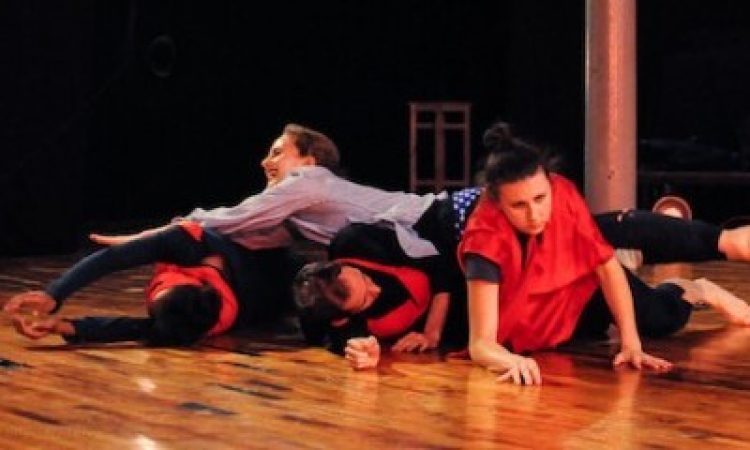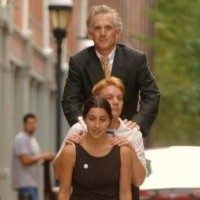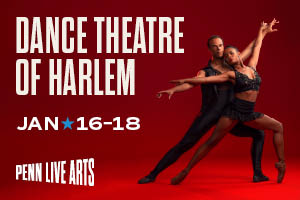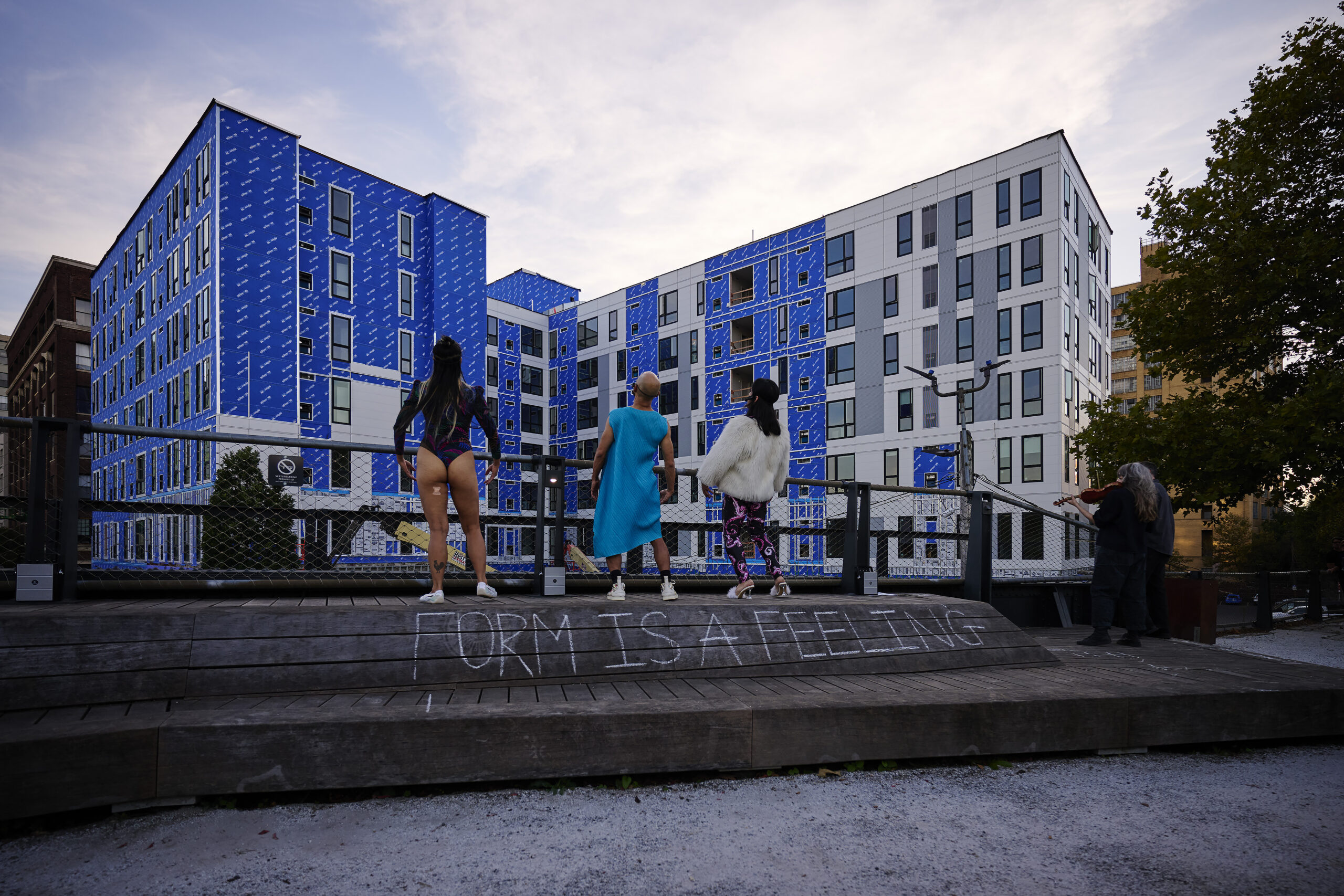Katherine Kiefer Stark’s evening length piece, Visible Structures, at the Mascher Space Cooperative, is an engrossing mash-up of interactive games and aggressive choreographed competitions that veer wildly from the highly theatrical to the pedestrian. Stark challenges us to see the dynamics of power shaped by historic narrative, social conventions, and our own unselfconscious playfulness.
Sub-titled, perhaps a bit tongue in cheek, as “a trilogy examining the age-old story of the hero’s journey,” the work (as program notes reveal) is sourced in part from Joseph Campbell’s look at the archetypal hero in comparative mythology, The Hero with a Thousand Faces (1949), and the more recent heroic narrative action films, The Ender’s Game (2013) and The Matrix (1999). Stark reconceives various elements from these sources into her own conceptual journey of the hero.
As we enter a smartly designed black box theater space, a Siri-like computer voice, generated by sound designer Andy Thierauf, beckons us into “Episode I: Encounters & Choices” to meet “the players” (perhaps Campbell’s first stage, “call to adventure”). We are assigned to seek out and play games with performers so we can win prize tokens. The interactive games all involve movement ideas created by the performer and sometimes the audience member: high five exchanges with a dancer, a snaking tour of the space, moving in slow motion towards a magnetic pole. The dancers draw their energy from our engagement and then display their own power in directing and leading us. The push-pull of relationships becomes more defined as we are instructed to “follow” a dancer and “avoid” another. I feel the similar contradictory strains of audience control and empowerment that Headlong Dance Theater’s Cell (2006) experimented with in their one-person audience odyssey work.
In “Episode II: The One, The Other One, and The Many,” we catapult into another world accompanied by the ominous, foreboding music of The Truman Show soundtrack. Here we face a theatricalized simulation of reality, where dancers weave mysterious narratives in a largely darkened space with fluctuating sounds and lighting. Wearing white sneakers with small lights attached, a trio steps, circles, and kicks; we only see their ghostly detached feet. Floor lighting (designed by Stark) soon creates bisecting pathways where this sneakered trio, with vertical orange stripes on their backs, meets a large group of dancers, wearing white socks and a blue patterned symbol on their backs. These dancers slide, glide, and turn in weighted, fluid movements to the undulating currents of Philip Glass; dancers and music cascade into and out of the space.
The group breaks into a unison Electric Slide dance party before a heroine (The One) emerges amidst the darkness, and I am mesmerized by the compact lyrical strength of Brionna Williams. Our heroine, distinguished from the generally male entourage of Campbell’s and Hollywood’s heroic figures, finds a mentoring figure in Harlee Trautman whose own powerful grace and extended movements offers The One encouragement. Then our heroine pursues a fight to the end with Leanne Grieger to The Ender’s Game soundtrack. The fight choreography is compelling and beautiful, and Williams’ final leap onto Greiger’s upper back brings down her sneakered adversary.
“Episode III: Power Suite” is an amalgam of the first pedestrian section and the second theatrical one where the audience members are assigned a favorite dancer and in a relay contest, grab clothing items laid out on the floor to render their chosen dancer “powerful:” black suit jacket, red tie, red bra, red eye mask. The dancers accessorize up and compete before a judge, while the audience is encouraged to cheer on their favorite. Our complicity in the selection of champions and defeat of the vanquished becomes more pained when the dancers then battle each other, tearing off their power clothing in almost too raw displays of aggression. How many millions have similarly abetted and cheered their televised heroes of dance contests and reality shows?
We are left stimulated, provoked, and yet numbed by an experience that suggests we live within a swirl of power disparities where hard-wired aggressiveness asserts itself through social conventions of play and war. Does the hero’s journey, however edifying to our psyches, simply embody this human condition? Time to bring in the anti-heroes.
The stand-out cast who also participated in the creation of the work includes Chloe Marie Newton, Marisa Illingworth, Melissa Chisena, Peaches Jones, and Sean Thomas Boyt.
The Naked Stark, Visible Structures, Mascher Space Cooperative, May 17-20, www.thenakedstark.com






